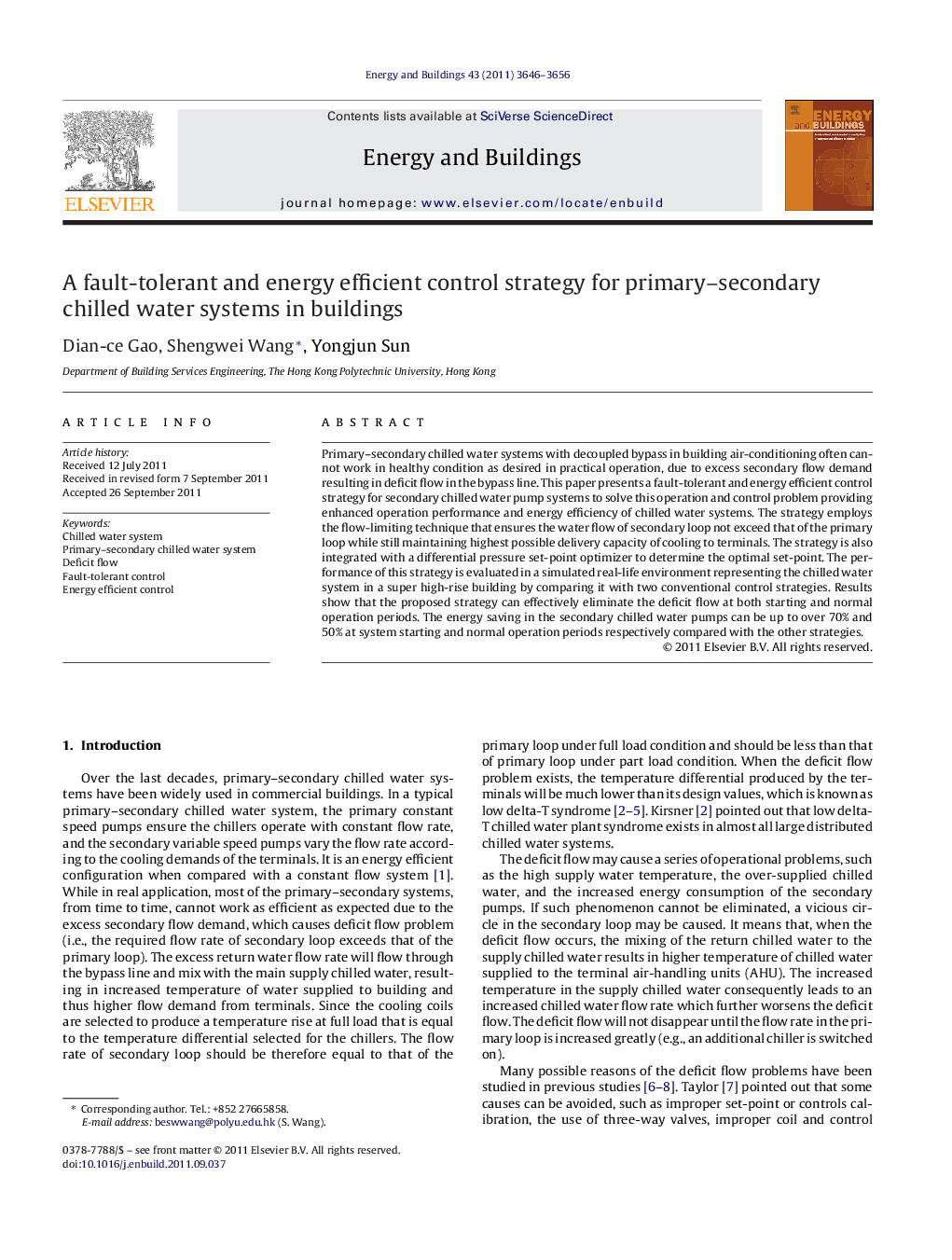| Article ID | Journal | Published Year | Pages | File Type |
|---|---|---|---|---|
| 264232 | Energy and Buildings | 2011 | 11 Pages |
Primary–secondary chilled water systems with decoupled bypass in building air-conditioning often cannot work in healthy condition as desired in practical operation, due to excess secondary flow demand resulting in deficit flow in the bypass line. This paper presents a fault-tolerant and energy efficient control strategy for secondary chilled water pump systems to solve this operation and control problem providing enhanced operation performance and energy efficiency of chilled water systems. The strategy employs the flow-limiting technique that ensures the water flow of secondary loop not exceed that of the primary loop while still maintaining highest possible delivery capacity of cooling to terminals. The strategy is also integrated with a differential pressure set-point optimizer to determine the optimal set-point. The performance of this strategy is evaluated in a simulated real-life environment representing the chilled water system in a super high-rise building by comparing it with two conventional control strategies. Results show that the proposed strategy can effectively eliminate the deficit flow at both starting and normal operation periods. The energy saving in the secondary chilled water pumps can be up to over 70% and 50% at system starting and normal operation periods respectively compared with the other strategies.
► A fault-tolerant control strategy for secondary chilled water pump systems. ► The strategy eliminates deficit flow in bypass line and enhances energy efficiency. ► A flow-limiting technique ensures secondary loop flow not exceed that of primary loop. ► It still maintains highest possible delivery capacity of cooling to terminals. ► Over 50% and 70% of chilled water pump energy saving at starting and normal operation.
